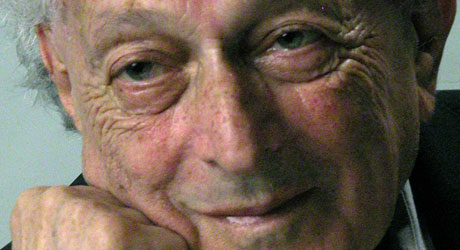My CONCERTO in the old style FOR THREE SOLO VIOLINS AND STRING ORCHESTRA was commissioned in 1994 by Marc Mostovoy for a group he founded, directed and conducted called the Concerto Soloists of Philadelphia (now called the Chamber Orchestra of Philadelphia, resident at the Kimmel Center). I completed the work in 1994 and dedicated it to Marc Mostovoy and his Concerto Soloists, who successfully premiered the work on January 8, 1995, at the Church of the Holy Trinity in Rittenhouse Square, Philadelphia. The solo violinists were Elizabeth Kaderabek, Richard Amoroso and Jennifer Haas. Tonight’s performance, with solo violinists Muneyoshi Takahashi, Kinga Augustyn, and Tzu-En Lee, will be the second performance of the work and a New York premiere.
For several years before the Philadelphia commission, I had been contemplating writing a concerto “in the old style.” Such a work by a contemporary composer is not as unusual as one might think. Many other composers have written works in the style of a previous era. This list would include such composers as Schoenberg, Prokofiev, Hindemith, Brahms, Stravinksy, Resphighi, and even Haydn. Since I had done a great deal of research into the music of the 18th and 19th centuries, I thought I would like to write a concerto grosso in the baroque style. I was delighted when the opportunity presented itself with the 1994 Mostovoy commission.
When I had completed my three-movement concerto, it turned out to be wholly original, albeit with obvious shades of Bach, Vivaldi and Townsend. The Bach and Vivaldi influences are clearly evident in the first and second movements, while Townsend predominates in the third (final) movement.
Structurally, the FIRST MOVEMENT is in a large three-part form with the first section being a statement of themes, the second section being a contrasting section (a kind of development section), and with the third section being a recapitulation of the themes of the first section.
The SECOND MOVEMENT is a Siciliana, which was a type of slow dance favored by Baroque composers for the slow movements of their concertos. This movement is in a kind of two-part form, where each part is repeated, yielding four sections (ABAB-Coda). The first section is the Siciliana theme itself, followed by a repeat of that theme by the piano. The second section is a contrasting section, played largely by the three solo violins. The third section is a repeat of the Siciliana theme in the first section. This is followed by a fourth section which is a repeat of the second section (which repeat also serves as a coda to the movement).
The THIRD MOVEMENT is in the classical rondo form, very much favored by Baroque and Classical composers. A (theme), B (contrasting section), A (theme), C (contrasting section), A (theme and coda). A large part of the C section has two of the three solo violins playing fast notes, while the first violin plays a more sustained lyrical melody. This style was favored by Bach and Vivaldi in the last movement of their concertos. Technically, in some places, the C section has the three solo violins playing in three different keys and three different rhythms all at the same time. This is strictly Townsend, and was not influenced by Bach or Vivaldi.
Notes by Douglas Townsend, NYC
Concerto in the Old Style for Three Solo Violins and String Orchestra
for Three Solo Violins and String Orchestra
Composed in 1994
By Douglas Townsend






